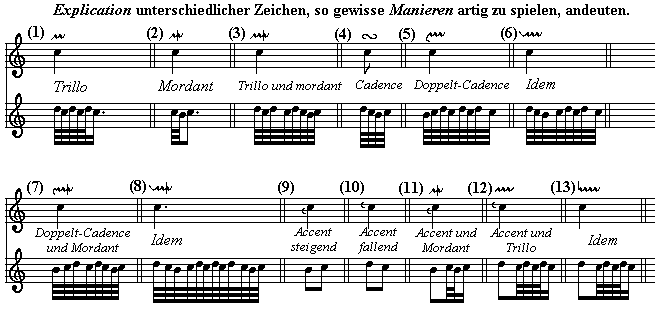How to Play Trills on the Violin
In this guide to violin trills you’ll learn how to trill, on or above the notes and the types of trills there are on the violin:
When young students first embark on their violin journey and notice their teachers doing some mysterious technique, they often excitedly want to try it right away themselves. For example, watching an advanced violinist execute a clean, sharp trill always prompts students to ask, “How did you do that?” Unfortunately, if they try it on their own they quickly become frustrated, because they do not yet know how to really make trill sound good.
Although it is important to have a teacher’s feedback on this, I hope this article will shed some light on what trills are for and how to practice them.
What are Trills?
A trill in music is when you oscillate (rapidly go back and forth) between two notes that are either a whole step or a half step apart. The different types of trills are also called ornamentations.
Ornamentations were an incredibly important part of Baroque performance practice. Baroque musicians typically embellished while they played, so they need to be fluent in all the types of trills and what would be tasteful. The rules of Baroque ornamentation were incredibly complex, and some of them are not even used anymore. Baroque composers such as Bach made entire tables of what all their ornamentation markings meant, but to go through them all would be more confusing than helpful. Sometimes when a particular type of trill is called for, editors will show a little example beneath the music. For example, many editions of Bach’s solo violin sonatas and partitas have demonstrations in the margins for particular trills.
Types of Trills

Pictured above is an example of Bach’s table. For our purposes, we are interested in the first four examples. (1) is the standard trill marking still used today. If you simply see tr written in the music, that means the same thing. You will also sometimes see (2), which indicates a simpler one-note turn called a mordent. Bach’s example has a vertical slash through it, meaning it is a lower mordent. A short squiggle without the slash would indicate an upper mordant (in this example, moving from C up to D). (4) is also very common. The other markings are more obscure today and relevant mostly if you are specializing in Baroque music.
It is important to mention that Bach’s system is only one of many, and other Baroque composers would give very different examples for each symbol. In case of doubt, follow any explicit markings in the music, the expertise of your teacher or ensemble leader, and your own sense of musical taste.
Half Step or Whole Step?
This is the most important question to ask when learning a piece with trills. Playing a half step instead of a whole step would change the entire feel of the melody. As a general rule, trill within the key signature. What does this mean? Say you are playing a piece in C major, no sharps or flats. You come to a B-natural with a trill marking over it. You should trill to C-natural, because C-sharp is not in the key signature. If the composer ever has a different intention, there will usually be a little flat or sharp sign above the note. Don’t hesitate to listen to good recordings if you are still unsure!
Trilling On or Above the Note?!?
Although the previous question was the most important, this is the most controversial! To this day, scholars argue about how trills from different eras should be played. Treatises from the mid-seventeen hundreds give many examples of starting a trill above or below the note, but rarely on the note. There were a few exceptions, such as when the main note of the trill began the melody. This convention must have changed over time however, because in 1830 Thomas Lindsay wrote, “Theorists are not agreed whether [the trill] should begin with the main or upper note; it is, therefore, as often performed one way as the other.” In 1828, pianist J. N. Hummel first suggested playing the main note first because it is the most important. Violinist Louis Spohr adopted this rule as well.
How to trill also depends on which “school” of violin playing you are using. The French school emphasizes trilling above the notes, while the Russians prefer a strong start on the main note.
How to Practice Trills
Practicing trills regularly will improve your left hand balance and set-up. There are several exercises to help with this. Start with first and second finger and alternate between the two. For this exercise, lift the first finger when you play the second (even though you would never do this during an actual trill!) Blend the two notes into one sound.
When actually playing trills, keep your lower fingers down. This means that if you are trilling between third and fourth finger, first and second fingers should be on the string as well. Also, when lifting fingers lift them in the same shape you put them down in, rather than going up to the ceiling or straightening. Trill with light left hand fingers but a strong sound in the bow.
Lastly, lift your trill finger as quickly as you put it down. This will create a very crisp and precise sound.
Practicing Trills, with a Metronome
You knew the metronome was going to come up eventually didn’t you? Once you have the feel of trills, this is a great way to get them up to speed. Set the metronome around 60 bpm. Trill once at the beginning of each click, remembering to lift the finger quickly. Then do two trills, three trills, etc. In pieces, most trills are very fast (think tremolo speed) but may be a little more moderate depending on context.
Trills in Famous Violin Pieces
Trills add sparks of excitement to many beautiful violin pieces at all levels. The most famous example is Tartini’s “Devil’s Trill” Sonata. The difficult trill passages come in the final movement. In the score Tartini wrote, “Trillo del diavolo al pie del letto”— The trill of the devil at the foot of the bed.
Mendelssohn’s Violin Concerto in E Minor features extended trills at the beginning of the third movement. The trills build expectation and transition into the frolicking rondo theme.
FREE Violin Scale Book
Sensational Scales is a 85 page violin scale book that goes from simple beginner scales with finger charts all the way to all three octave scales and arpeggios

Hi! I'm Zlata
Classical violinist helping you overcome technical struggles and play with feeling by improving your bow technique.
A less intimidating but still beautiful example is the second movement of Kabalevsky’s Violin Concerto in C Major. The soloist, after a long chromatic passage, crescendos into ethereal trills that weave their way back to the main theme to close the piece.
I hope you enjoyed this introduction to the history and execution of trills! Comment what your favorite piece with trills is, or any tips you have for practicing them!


0 Comments